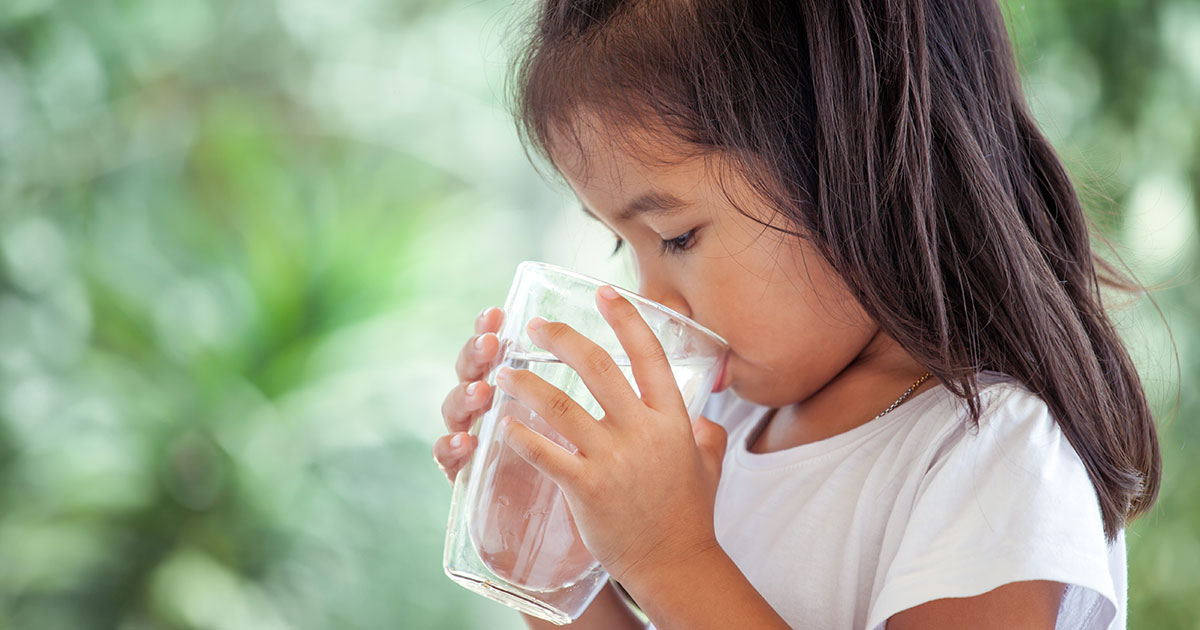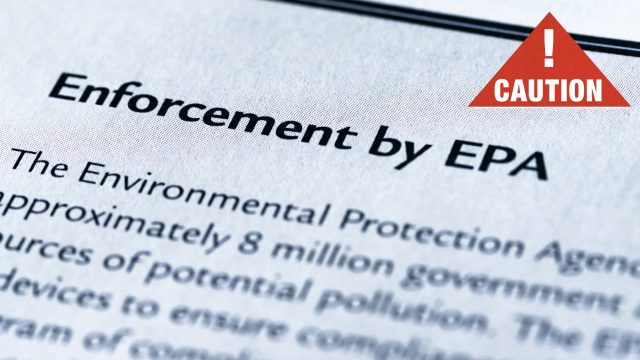Report on the Stanton Water Treatment Plant and its Contribution to Sustainable Development Goals
Introduction
On July 31, 2025, a delegation of U.S. Representatives, including Chrissy Houlahan (PA-06), Sarah McBride (DE-AL), and Mary Gay Scanlon (PA-05), conducted a site visit to the Stanton Water Treatment Plant in Wilmington, Delaware. The purpose of the visit was to inspect a new, advanced Per- and Polyfluoroalkyl Substances (PFAS) filtration system and to discuss its implications for public health, environmental protection, and the achievement of key United Nations Sustainable Development Goals (SDGs).
Project Overview and Regional Impact
The new facility at the Stanton Water Treatment Plant represents a landmark investment in public health infrastructure. Its primary function is the removal of PFAS, commonly known as “forever chemicals,” from the water supply.
- Service Population: The system will provide clean, safe drinking water to over 100,000 residents across Delaware and parts of Pennsylvania.
- Technological Scale: It is one of the largest PFAS treatment systems in the United States and the largest of its kind in the Northeast region.
- Regulatory Compliance: The system was engineered to meet and exceed the stringent PFAS regulations finalized by the Environmental Protection Agency (EPA) in 2024.
- Cross-State Benefit: The plant treats water from two waterways originating in Pennsylvania’s 6th congressional district, demonstrating a regional approach to environmental management.
Alignment with Sustainable Development Goals (SDGs)
The Stanton Water Treatment Plant project is a direct and impactful contributor to several Sustainable Development Goals, underscoring the critical link between infrastructure investment and global sustainability targets.
- SDG 6: Clean Water and Sanitation: The project’s core mission is to ensure the availability and sustainable management of water. By implementing an advanced filtration system to remove harmful PFAS chemicals, it directly addresses Target 6.1, which aims to achieve universal and equitable access to safe and affordable drinking water for all.
- SDG 3: Good Health and Well-being: By eliminating toxic chemicals linked to serious health concerns from the public water supply, the facility significantly contributes to Target 3.9, which seeks to substantially reduce the number of deaths and illnesses from hazardous chemicals and water pollution and contamination.
- SDG 9: Industry, Innovation, and Infrastructure: The plant is an example of building resilient infrastructure and fostering innovation (Target 9.1 and 9.4). It utilizes advanced technology to upgrade existing facilities, making them more sustainable and capable of addressing modern environmental challenges.
- SDG 11: Sustainable Cities and Communities: Securing a safe water supply is fundamental to creating inclusive, safe, resilient, and sustainable communities (Target 11.5). This infrastructure investment enhances the environmental quality and resilience of the Wilmington metropolitan area.
- SDG 17: Partnerships for the Goals: The successful implementation of this large-scale project was noted as a result of effective public-private partnerships, a key component of SDG 17. The collaboration between government bodies and private entities like Veolia was essential for its completion.
Policy Implications and Official Statements
The visiting representatives emphasized the project’s importance in the context of current environmental policy debates. Key concerns and action points raised during the visit include:
- The Right to Clean Water: A consensus was shared that all citizens have a fundamental right to drinking water free of harmful contaminants.
- Importance of Federal Regulation: The officials stressed the necessity of robust federal standards, such as the EPA’s PFAS drinking water rule, to protect public health nationwide.
- Threat of Deregulation: Concerns were voiced regarding recent efforts to dismantle environmental regulations, including rules designed to limit PFAS, which could undermine public health protections.
- Call for Continued Action: The representatives advocated for continued federal investment and support for local utilities to modernize infrastructure and effectively counter emerging environmental threats.
Analysis of SDGs, Targets, and Indicators
1. Which SDGs are addressed or connected to the issues highlighted in the article?
-
SDG 3: Good Health and Well-being
- The article directly connects the presence of PFAS chemicals in drinking water to public health risks, stating they “have been linked to a range of serious health concerns.” The entire initiative to build the water treatment plant is framed as an effort to protect “public health.”
-
SDG 6: Clean Water and Sanitation
- The central theme of the article is ensuring “clean, safe drinking water” for residents. The new Stanton Water Treatment Plant is a direct action to improve water quality by removing “toxic forever chemicals from two waterways.”
-
SDG 9: Industry, Innovation and Infrastructure
- The article highlights the construction of a new, large-scale infrastructure project: the “Stanton Water Treatment Plant.” It is described as an “advanced PFAS filtration system” and “one of the largest PFAS treatment systems in the United States,” representing a significant investment in modernizing infrastructure.
-
SDG 11: Sustainable Cities and Communities
- The project aims to make the community safer and more sustainable by ensuring access to a basic service. The plant will serve “more than 100,000 residents in the region,” directly contributing to the quality of life and safety of the community.
-
SDG 16: Peace, Justice and Strong Institutions
- The article discusses the role of governmental institutions, specifically the Environmental Protection Agency (EPA), in setting and enforcing standards for clean water. It highlights the political debate around these regulations, mentioning that the plant was built to meet EPA rules while also noting that the “EPA has now begun dismantling dozens of environmental regulations,” which relates to the effectiveness and accountability of these institutions.
-
SDG 17: Partnerships for the Goals
- The article explicitly mentions that the project’s success relies on collaboration, underscoring the “critical role of federal investment and public-private partnerships in protecting public health and ensuring clean, safe drinking water.”
2. What specific targets under those SDGs can be identified based on the article’s content?
-
Target 3.9: Substantially reduce the number of deaths and illnesses from hazardous chemicals and water pollution.
- The effort to remove “toxic forever chemicals” (PFAS) which are “linked to a range of serious health concerns” directly addresses this target by aiming to prevent illnesses caused by water contamination.
-
Target 6.1: Achieve universal and equitable access to safe and affordable drinking water for all.
- The new facility’s purpose is to provide “safe, clean drinking water” to “more than 100,000 residents,” directly working towards the goal of safe drinking water access for the population in that region.
-
Target 6.3: Improve water quality by reducing pollution and minimizing release of hazardous chemicals.
- The plant’s advanced filtration system is designed specifically to “remove toxic forever chemicals from two waterways,” which is a direct action to improve water quality by treating pollution from hazardous chemicals.
-
Target 9.1: Develop quality, reliable, sustainable and resilient infrastructure.
- The article describes the “new Stanton Water Treatment Plant” as a major piece of modern infrastructure, one of the “largest of its kind in the Northeast,” built to be resilient against emerging environmental threats like PFAS contamination.
-
Target 17.17: Encourage and promote effective public, public-private and civil society partnerships.
- The article explicitly credits “federal investment and public-private partnerships” as being critical to the project, showcasing this target in action.
3. Are there any indicators mentioned or implied in the article that can be used to measure progress towards the identified targets?
-
Indicator for Target 6.1: Proportion of population using safely managed drinking water services.
- The article provides a specific number, stating the plant “will serve more than 100,000 residents.” This figure can be used as a direct measure of the population gaining access to improved, safely managed drinking water.
-
Indicator for Target 6.3: Level of water quality based on established standards.
- The article implies a clear indicator by mentioning that the new system “was built to meet and exceed Environmental Protection Agency (EPA) regulations” for PFAS. Progress can be measured by testing the treated water to ensure PFAS levels are below the limits set by the EPA rule.
-
Indicator for Target 17.17: Value of financial and technical assistance committed to partnerships.
- While not providing a specific dollar amount, the article points to the existence of “federal investment” as a key component of the partnership. The scale of the project (“one of the largest PFAS treatment systems in the United States”) implies a significant financial commitment, which would be a measurable indicator.
4. Summary Table of SDGs, Targets, and Indicators
| SDGs | Targets | Indicators |
|---|---|---|
| SDG 3: Good Health and Well-being | 3.9: Substantially reduce illnesses from hazardous chemicals and water pollution. | Reduction in public exposure to PFAS chemicals linked to “serious health concerns.” |
| SDG 6: Clean Water and Sanitation | 6.1: Achieve universal access to safe drinking water. 6.3: Improve water quality by reducing pollution from hazardous chemicals. |
Number of people served by the new facility (“more than 100,000 residents”). Level of PFAS in treated water, measured against “Environmental Protection Agency (EPA) regulations.” |
| SDG 9: Industry, Innovation and Infrastructure | 9.1: Develop quality, reliable, sustainable and resilient infrastructure. | The construction and operation of a large-scale, “advanced PFAS filtration system.” |
| SDG 11: Sustainable Cities and Communities | 11.1: Ensure access for all to adequate, safe and affordable basic services. | Provision of safe drinking water as a basic service to a large residential population. |
| SDG 16: Peace, Justice and Strong Institutions | 16.6: Develop effective, accountable and transparent institutions. | The existence and enforcement of the “EPA’s PFAS drinking water rule.” |
| SDG 17: Partnerships for the Goals | 17.17: Encourage and promote effective public, public-private partnerships. | The implementation of the project through “federal investment and public-private partnerships.” |
Source: houlahan.house.gov







